Plumeria Does Not Bloom: Why Is My Frangipani Not Flowering
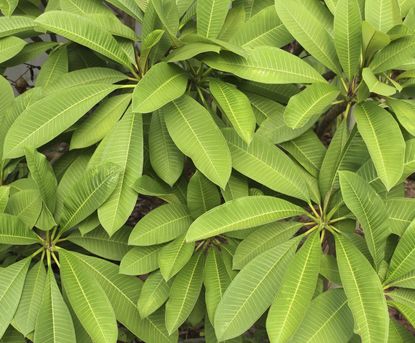

Frangipani, or Plumeria, are tropical beauties that most of us can only grow as houseplants. Their lovely flowers and fragrance evoke a sunny island with those fun umbrella drinks. Many of us northern gardeners wonder, why is my Frangipani not flowering? Generally, Frangipani will not flower if they receive less than six hours of bright sunlight, which can be hard to achieve in some climates or where there are lots of trees. There are a few cultural and situational steps you can take, however, if your Plumeria does not bloom.
Why is My Frangipani Not Flowering?
Frangipani flowers come in a colorful array of tones. The bright hues of these five petaled beauties are standouts as container plants in cooler climes, or as garden specimens in warm climates. The foliage is glossy and nice to look at, but since most gardeners grow the plants for their profuse blooms, a non-blooming Frangipani is something of a disappointment. There are three main reasons for a Frangipani not blooming. In addition to the six hours of bright light the plants require, they also need fertilizer at the right time and pruning occasionally. Pests can also attribute to non-blooming in plants. If the fertilizer is not the right type, and is not applied at the right time, it can affect blooming. Fertilize your Plumeria plants during the spring and summer. Another reason a Frangipani will not flower is that the stems are not old enough. Young plants, or those that have been pruned, need at least two years before the wood is ready to produce buds and flower. Insects such as thrips, aphids, and mealybugs will threaten overall vigor but can also cause withering and dropping of new buds, another possible cause when a Plumeria does not bloom.
How to Reduce Chances of Non-Blooming Frangipani
Frangipani are not cold tolerant and grow best in warm regions of the world. Cool season gardeners can put container plants outdoors in summer but they need to go indoors when cold weather threatens. Plumeria plants are hardy to 33 degrees F. (.5 C.). Plant in-ground trees in a site with full to partial sun, but at least six hours of light per day. Extreme sites, such as the southern side of the house, should be avoided. Potted plants should be in good potting soil with excellent drainage. In-ground plants need soil amended with compost and good drainage. Water the equivalent of 1 inch (2.5 cm.) per week. If you are rooting a cutting, you should wait to fertilize until the cutting has new leaves. Mature Frangipani should not be watered or fertilized in winter. In spring, use a water soluble fertilizer with phosphorus content of 50 or higher twice per week. A granular fertilizer should have a phosphorus rate of 20 or higher. Time release formulations work well for consistent fertilizing through summer. A balanced time release fertilizer works well for overall plant health, but one higher in phosphorus can help promote flowering. Prune these plants in winter, but again, this is one of the reasons for Frangipani not flowering, at least for a couple of years.
Gardening tips, videos, info and more delivered right to your inbox!
Sign up for the Gardening Know How newsletter today and receive a free download of our most popular eBook "How to Grow Delicious Tomatoes."

Bonnie Grant is a professional landscaper with a Certification in Urban Gardening. She has been gardening and writing for 15 years. A former professional chef, she has a passion for edible landscaping.
-
 How To Get Rid Of Mosquitoes In The Garden: 9 Natural Ways To Make Them Buzz Off!
How To Get Rid Of Mosquitoes In The Garden: 9 Natural Ways To Make Them Buzz Off!How to get rid of mosquitoes is on the minds of people in the summer in almost every region of the world. Learn how to repel the pests without toxic chemicals.
By Mary Ellen Ellis
-
 Monkey Orchid Care: How To Grow This Fascinating Species
Monkey Orchid Care: How To Grow This Fascinating SpeciesThe monkey orchid bears a remarkable resemblance to its namesake and, with a little know-how, can be successfully grown as a houseplant.
By Bonnie L. Grant
-
 Plumeria Repotting Guide – Tips On When To Repot Plumerias
Plumeria Repotting Guide – Tips On When To Repot PlumeriasGrowing plumeria in a container requires repotting a plumeria yearly, in most cases. This encourages optimum growth and beauty. Plumeria repotting is not complicated, requiring a gentle touch and clean pruners. Take a look at the specifics in this article.
By Becca Badgett
-
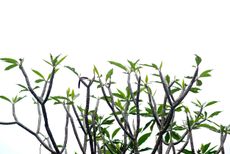 Making A Plumeria Branch: How To Encourage Plumeria Branching
Making A Plumeria Branch: How To Encourage Plumeria BranchingAlthough plumerias are surprisingly easy to grow, they can become lopsided or spindly. If your goal is to encourage plumeria branching, thus creating a fuller, balanced plant with more blooms, pruning is the way to go. Learn how to get plumeria to branch in this article.
By Mary H. Dyer
-
 Plumeria Rust Fungus: How To Treat Plumeria Plants With Rust Fungus
Plumeria Rust Fungus: How To Treat Plumeria Plants With Rust FungusAlthough fungal diseases can happen anywhere, warm, humid tropical regions are especially favorable for fungal growth. Plumeria rust fungus is a disease that is specific to plumeria. Learn more about rust on plumeria plants in this article.
By Darcy Larum
-
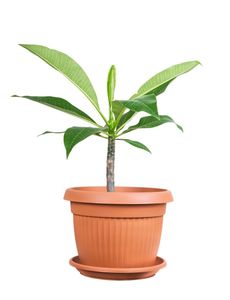 Indoor Plumeria Care – How To Grow Plumeria Plants Indoors
Indoor Plumeria Care – How To Grow Plumeria Plants IndoorsYou want to grow plumeria at home but feel geographically disadvantaged because you don?t live in the right planting zone (zone 9-11). But can you grow plumeria inside? What is required for indoor plumeria care? Click this article on to learn more.
By Shelley Pierce
-
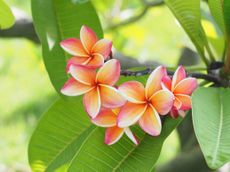 Moving Plumeria Plants : How And When To Move A Plumeria
Moving Plumeria Plants : How And When To Move A PlumeriaPlumeria can develop into large bushes with extensive root systems. Transplanting mature plants may be difficult, but transplanting a plumeria cutting is easy. Knowing when to move a plumeria is also an important aspect. This article will help with that.
By Bonnie L. Grant
-
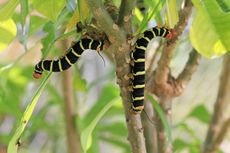 Plumeria Pest Problems – Learn About Pest Control For Plumerias
Plumeria Pest Problems – Learn About Pest Control For PlumeriasPlumerias are colorful and rewarding garden or patio plants. As with any plant, especially when it is stressed, you may have plumeria pest problems. On a positive note, common plumeria pests can be controlled with simple or organic treatments. Learn more here.
By Gardening Know How
-
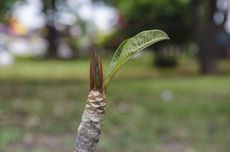 Plumeria Cutting Propagation – How To Grow Plumeria Cuttings
Plumeria Cutting Propagation – How To Grow Plumeria CuttingsPlumeria is a tropical and subtropical flowering plant that's very popular for its fragrance and for its use in making leis. Plumeria can be grown from seed, but it can also be propagated extremely well from cuttings. This article can help with that.
By Liz Baessler
-
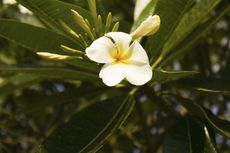 Plumeria Bud Drop: Why Are Plumeria Flowers Dropping
Plumeria Bud Drop: Why Are Plumeria Flowers DroppingIt can be upsetting to see plumeria flowers falling off or buds dropping before they open. This article provides information about plumeria flower drop and other problems with plumeria. Click here to find out why flower drop occurs and how to fix them.
By Teo Spengler